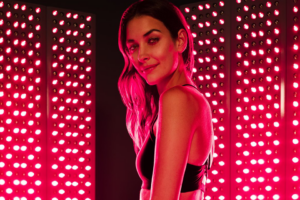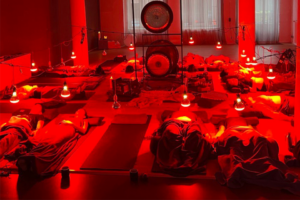Red Light Therapy Wavelengths
Light is crucial for sustaining life on Earth, playing a significant role in human health much like diet, exercise, and sleep. Despite its importance, light’s impact on well-being is often underestimated, with many people lacking adequate exposure to natural sunlight—statistics suggest that the average American spends upwards of 90% of their time indoors under artificial lighting.

Understanding Light
Light consists of electromagnetic radiation that travels as waves, characterized by energy and frequency, known as wavelength. Wavelengths are measured in nanometers (nm), with one nanometer equating to one-billionth of a meter. The electromagnetic spectrum encompasses a variety of light wavelengths, each with different frequencies and colors, spanning from visible light to invisible bands like near infrared (NIR).
Visible light appears in various colors depending on its wavelength, while its energy content varies by frequency. The visible light spectrum represents only a small fraction of the entire electromagnetic radiation spectrum.
Health Implications of Different Light Colors
- Ultraviolet (UV) Light: Ranging from 100nm to 400nm, UV light is invisible and has short, intense wavelengths. It is known for its role in skin tanning or burning, as well as its ability to help the body produce vitamin D3, essential for calcium absorption.
- Blue Light: Common in modern digital devices, blue light (380-500nm) is known for its brightness and efficiency in electronics. It can positively impact conditions like bacterial acne and tooth whitening but may disrupt sleep patterns and circadian rhythms if overexposed at night.
- Green Light: Within the 520-560nm range, the effects of green light are less understood, with ongoing research indicating potential anti-inflammatory benefits.
- Yellow Light: Found in the 570-590nm spectrum, yellow light is under study for potential skin health benefits, although more research is necessary.
- Red Light: Visible red light, primarily in the mid-600nm range, has been extensively researched for its health benefits. Studies have shown that red light can stimulate cellular function by enhancing mitochondrial ATP production. This discovery has led to widespread use in clinical applications, particularly for skin health, reducing inflammation, and aiding recovery.
- Near Infrared (NIR) Light: NIR light (mid-700 to 1000 nm) penetrates deeper into the body than visible light, offering extensive healing and regenerative benefits. It is particularly effective in supporting muscle health and enhancing natural recovery processes.
Red Light and Near Infrared Light
Red light is absorbed effectively by surface tissues, offering benefits like improved skin health and healing.
NIR light penetrates deeper, helping support recovery and reduce inflammation.
Light is essential to life and vital for maintaining health. Adequate light exposure is necessary, with a special emphasis on the benefits of red and NIR light, which have been shown to boost cellular function and contribute to healthier sleep, skin, and recovery processes.
Conclusion
Our red light therapy products incorporate both red and NIR wavelengths, typically combining 660nm red light with 850nm NIR light. We also offer customizable wavelength options to meet specific needs, including 630nm, 660nm, 810nm, 830nm, and 850nm.
Share to your social media:
- Benefits of Light on Health, Benefits of Red Light, Cellular Benefits of Light Therapy, Custom Light Wavelengths for Therapy, Customizable Red Light Therapy Devices, Effective Light Therapy Wavelengths, Electromagnetic Radiation Health, Health Effects of Light Wavelengths, Infrared Light Therapy, Light Therapy for Recovery, Light Therapy for Skin Health, Near Infrared Light Therapy, NIR Light Benefits, red light therapy, Red Light Therapy Products, Red vs Near Infrared Light, Therapeutic Light Wavelengths






